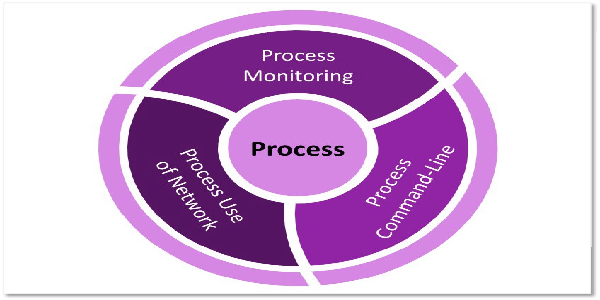July 29, 2021
Discussion around ATT&CK often involves tactics, techniques, procedures, detections, and mitigations, but a significant element is often overlooked: data sources. Data sources for every technique provide valuable context and opportunities to improve your security posture and impact your detection strategy.
This two-part blog series will outline a new methodology to extend ATT&CK’s current data sources. In this post, we explore the current state of data sources and an initial approach to enhance them through data modeling. We’ll define what an ATT&CK data source object represents and how we can extend it to introduce the concept of data components. In our next post we’ll introduce a methodology to help define new ATT&CK data source objects.
The table below outlines our proposed data source object schema:
Where to Find Data Sources Today
Data sources are featured as part of the (sub)technique object properties:
While the current structure only contains the names of the data sources, to understand and effectively apply these data sources, it is necessary to align them with detection technologies, logs, and sensors.
Improving the Current Data Sources in ATT&CK
The
2. Define Data Sources Through Data Elements
Data modeling enables us to validate data source names and provide a definition for each one in a standardized way. This is accomplished by leveraging the main data elements present in the data we collect.
We can use the data element to name the data source related to the adversary behavior that we want to collect data about. For example, if an adversary modifies a Windows Registry value, we’ll collect telemetry from the Windows Registry. How the adversary modifies the registry, such as the process or user that performed the action, is additional context we can leverage to help us define the data source.
We can also group related data elements to provide a general idea of what needs to be collected. For example, we can group the data elements that provide metadata about network traffic and name it Netflow.
3. Incorporate Data Modeling and Adversary Modeling
Leveraging data modeling concepts would also enhance ATT&CK’s current approach to mapping a data source to a technique or sub-technique. Breaking down data sources and standardizing the way data elements relate to each other would allow us to start providing more context around adversary behaviors from a data perspective. ATT&CK users could take those concepts and identify what specific events they need to collect to ensure coverage over a specific adversary action.
For example, in the image below, we can add more information to the Windows Registry data source by providing some of the data elements that relate to each other to provide more context around the adversary action. We can go from Windows Registry to ( Process — created — Registry Key).
This is just one relationship that we can map to the Windows Registry data source. However, this additional information will facilitate a better understanding of the specific data we need to collect.
4. Integrate Data Sources into ATT&CK as Objects
The key components in ATT&CK — tactics, techniques, and groups — are defined as objects. The image below demonstrates how the technique object is represented within the framework.
While data sources have always been a property/field object of a technique, it’s time to convert them into objects, with their own corresponding properties.
5. Expand the ATT&CK Data Source Object
Once data sources are integrated as objects in the ATT&CK framework, and we establish a structured way to define data sources, we can start identifying additional information or metadata in the form of properties.
The table below outlines some initial properties we propose starting off with:
These initial properties will advance ATT&CK data sources to the next level and open the door to additional information that will facilitate more efficient data collection strategies.
6. Extend Data Sources with Data Components
Our final proposal is to define data components. The relationships we previously discussed between the data elements related to the data sources (e.g., Process, IP, File, Registry) can be grouped together and provide an additional sub-layer of context to data sources. This concept was developed as part of the Open Source Security Event Metadata (OSSEM) project and presented at ATT&CKcon 2018 and 2019. We refer to this concept as Data Components.
Data Components in action
In the image below, we extended the concept of Process and defined a few data components including Process Creation and Process Network Connection to provide additional context. The outlined method is meant to provide a visualization of how to collect from a Process perspective. These data components were created based on relationships among data elements identified in the available data source telemetry.
The diagram below maps out how ATT&CK could provide information from the data source to the relationships identified among the data elements that define the data source. It’d then be up to you to determine how best to map those data components and relationships to the specific data you collect.
What’s Next
In the second post of this two-part series, we’ll explore a methodology to help define new ATT&CK data source objects and how to implement the methodology with current data sources. We will also release the output of our initial analysis, where we applied these data modeling concepts to draft a sample of the new proposed data source objects. In the interim, we appreciate those who contributed to the discussions around data sources and we look forward to your additional feedback.
©2020 The MITRE Corporation. ALL RIGHTS RESERVED. Approved for public release. Distribution unlimited 20–00841–11.
Defining ATT&CK Data Sources, Part I: Enhancing the Current State was originally published in MITRE ATT&CK® on Medium, where people are continuing the conversation by highlighting and responding to this story.
Article posted by: https://medium.com/mitre-attack/defining-attack-data-sources-part-i-4c39e581454f
——————————————————————————————————————–
Infocerts, 5B 306 Riverside Greens, Panvel, Raigad 410206 Maharashtra, India
Contact us – https://www.infocerts.com
This is the article generated by feed coming from medium.com and Infocerts is only displaying the content.

